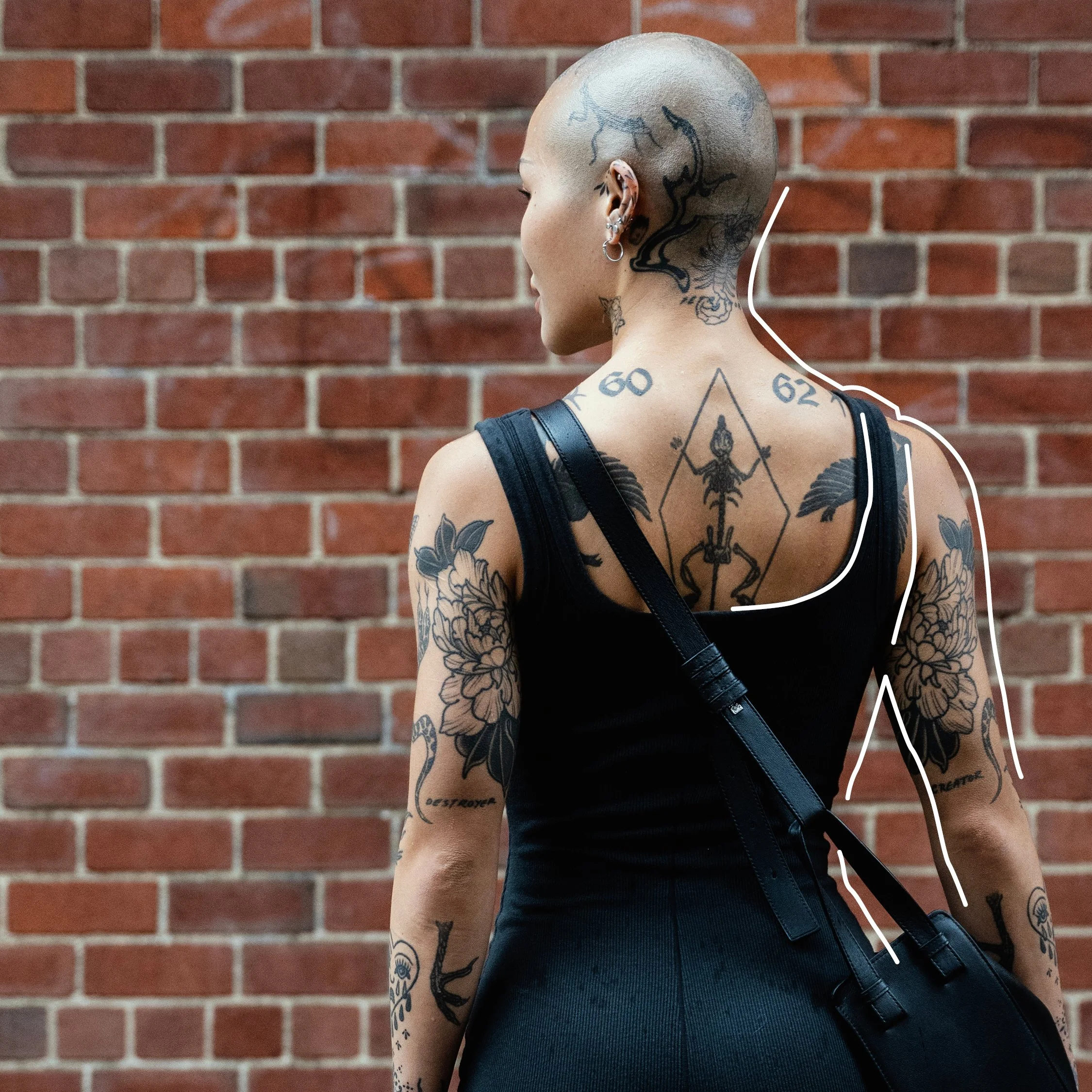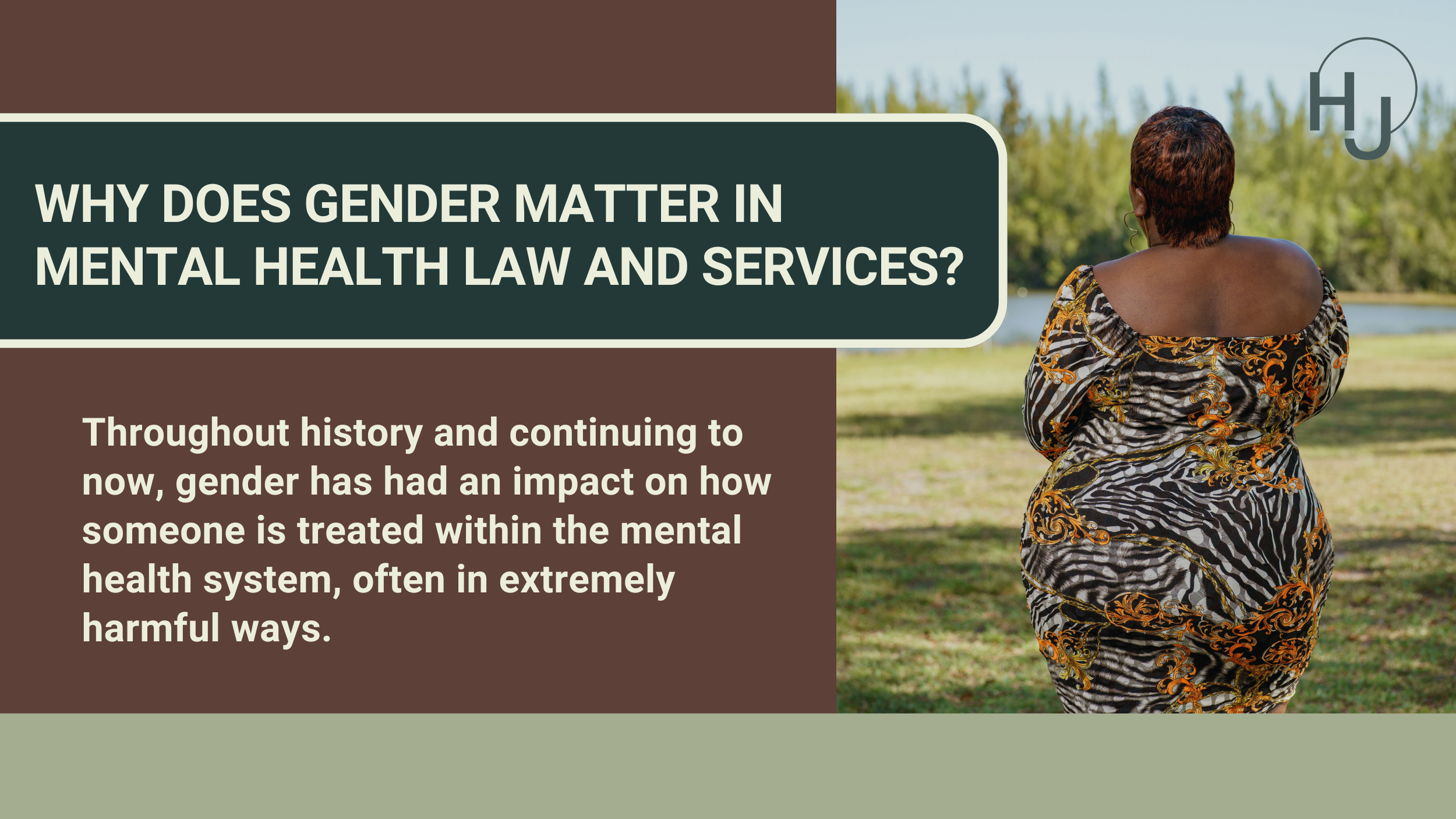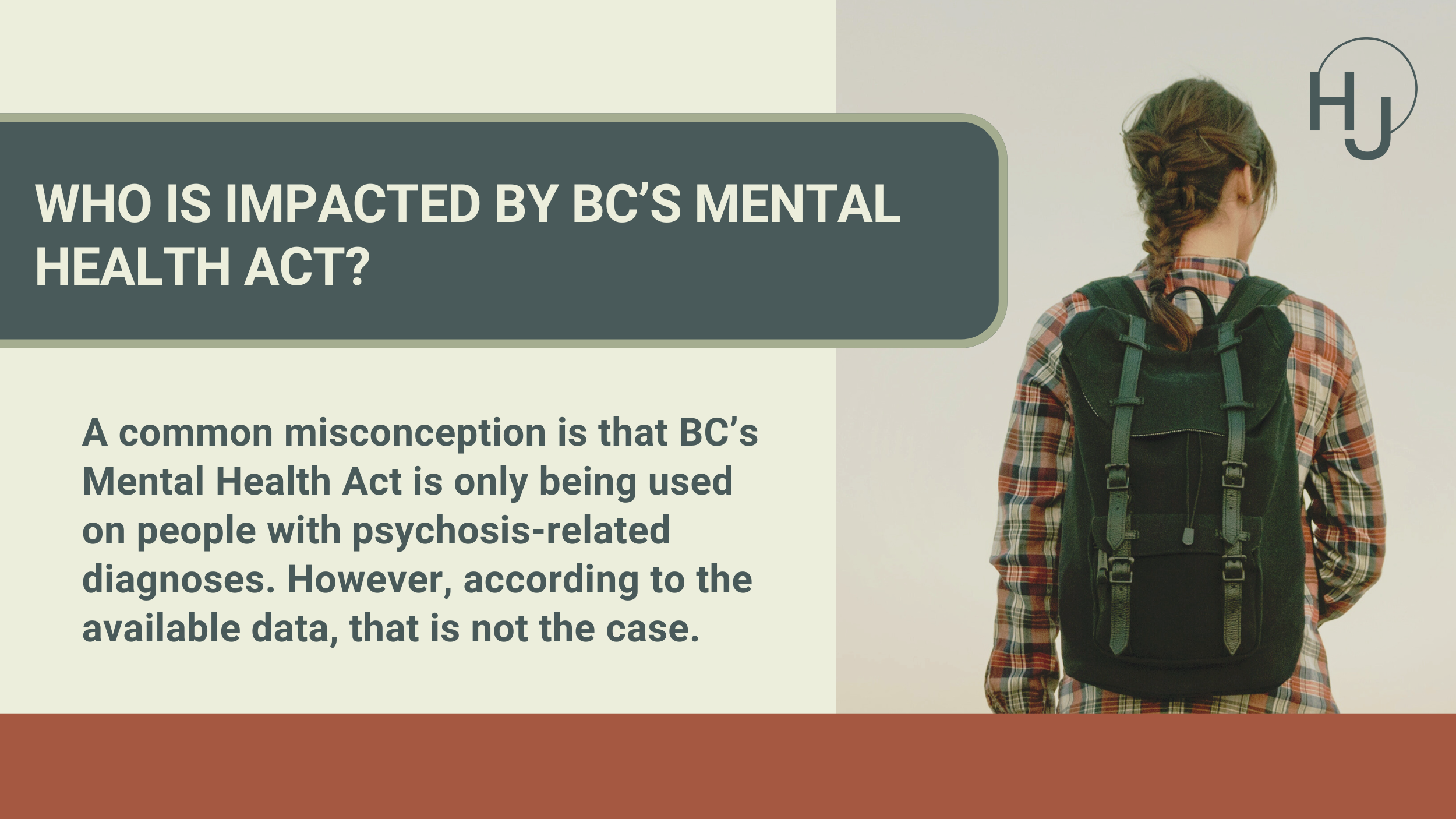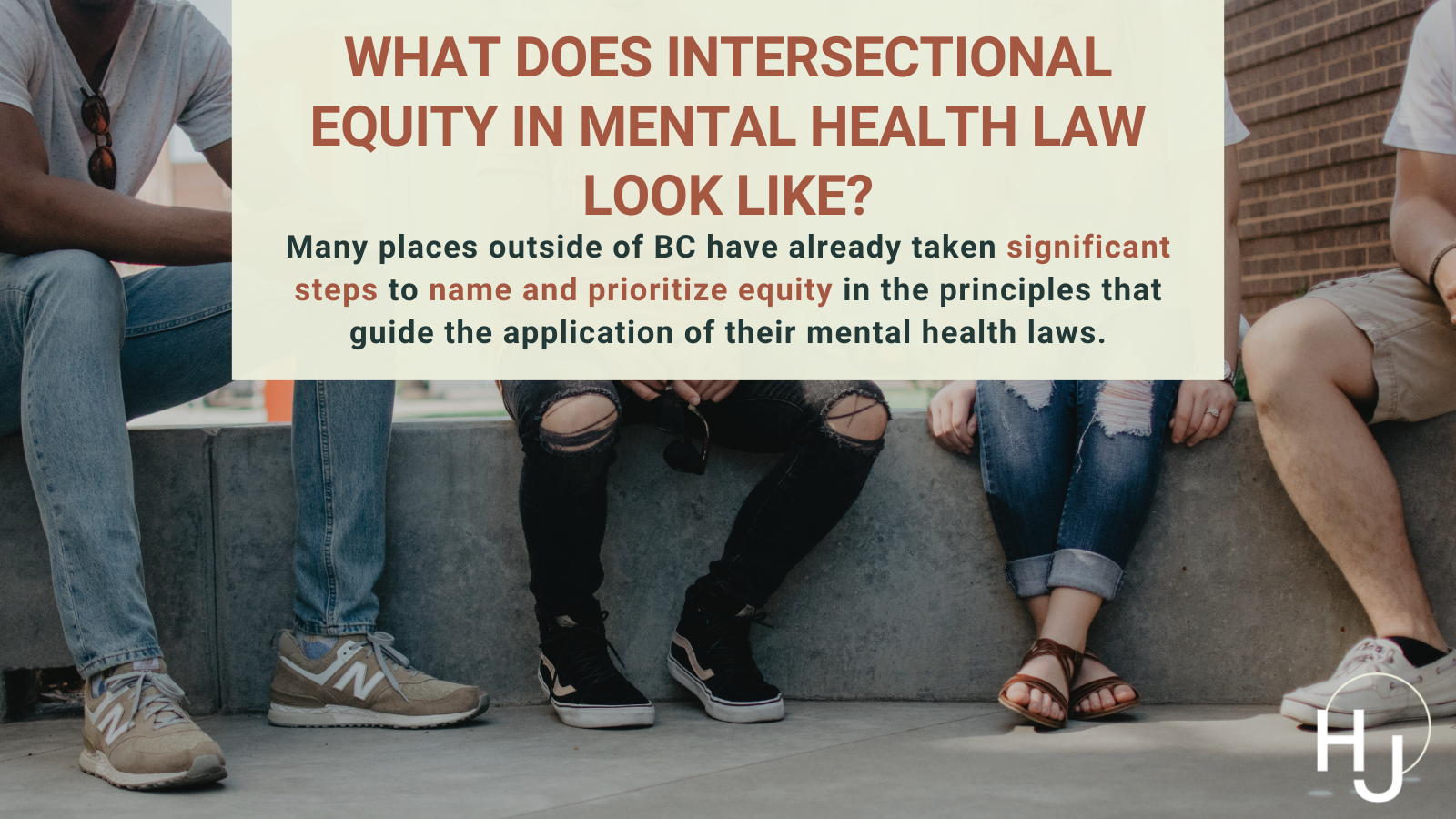
Façade of Safety: Gender-based violence in BC’s involuntary mental health system
Below are some important summaries from the full publication. We encourage you to read the full publication for more information.
How and why we did this work
“Because you have no control, you have no power in that. You’re locked… you’re a prisoner… you’re held captive. And I just get scared—what if someone on a power trip wants to do something bad?”
-
Health Justice use a participatory engagement governance model that centres those most impacted by our work. Through this process, Lived Experience and Indigenous experts shared gender-based human rights impacts and instances of gender-based violence and harassment with us repeatedly. Although detention and involuntary treatment have been documented to harm people of all genders, cis and trans girls and women; trans, non-binary, and Two-Spirit people; and other gender-diverse people may experience disproportionate challenges and harms. To respond to the need for a gender-specific analysis that was shared so clearly with us, Health Justice did this project to support this work in a safe and ethical way.
-
A core part of the project was to centre the expertise of people with direct lived and living experiences of detention and involuntary treatment. Most Lived Experience Experts who participated completed one-on-one interviews with the Peer Researcher working on the project to support safety and mutuality. Some participated by sharing previous written work about their experiences.
We also developed an engagement survey for a small group of clinicians and front-line workers in the involuntary treatment system to understand their perspectives on the issues identified by Lived Experience Experts, as well carried out significant legal research.
All of the thoughts, ideas, and analysis in this publication have been built upon expertise and analysis that has been shared with us. We want to acknowledge that Health Justice did not start this work and that we have had the privilege of learning from and building upon hard work already done by others who are often unacknowledged.
Why focus on gender-based violence?
“I felt really vulnerable having to wear hospital clothing… being around men… you don’t feel covered. My body felt exposed.”
-
Gender: Gender is a socially constructed understanding of a complex combination of norms, roles, behaviours, and expressions. For example, how we dress, how we speak, what role we play in our family, and how assertive we are can all be tied to or socially enforced ideas of gender. Social construction of gender can change over time, from culture to culture, and from person to person.
This project uses an expansive, non-binary understanding of gender, as well as gender identity and expression; the project also explores the complex intersections between gender, sex, sexual orientation, and other intersecting aspects of a person’s identity.
Violence: Defining violence can be challenging; understanding the scope of what causes harm differs across time, geography, culture, and individuals. This project adopts a broad understanding of violence from the World Health Organization that includes “intentional use of physical force or power, threatened or actual” and reflects that fact that experiences of violence are shaped by structural forces like colonization, inequity, discrimination, and poverty.
In this project, an assessment of structural violence allows us to see that many of the gendered impacts described by project participants may seem like individual events between a specific treatment team or individual and patient, but both the cause and impacts are often rooted in complex layers of gender-based violence.
-
Experiences of involuntary treatment do not impact all people and communities in the same way. Aspects of a person’s identity and life experiences, including gender, sex, sexual orientation, Indigeneity, race, (dis)ability, migration status, or family status, can shape the way they experience it. In addition, chronic oppression and discrimination related to an aspect of a person’s identity, failure to affirm gender identity or being subjected to patriarchal gender norms, can create mental health inequities because of their negative impacts on wellbeing.
Colonial conceptions of gender have typically reflected a binary understanding (boys and girls; men and women) rooted in patriarchal, Eurocentric ideas that centre whiteness and narrow definitions of acceptable heterosexual masculinity. These binary conceptions of gender have resulted in inequity for cis and trans women and girls; Two-Spirit, trans, and non-binary people; as well as other gender-diverse people.
The mental health system has a long history of pathologizing behaviour that does not conform to current social norms and expectations related to gender, sex, and sexuality. This has included pathologizing gender and sexuality through diagnoses like hysteria, gender identity disorder, and homosexuality. Many of the most invasive mental health treatments through history, including the use of sexual sterilization, lobotomies, ECT, and conversion therapies have had differential impacts based on gender and sexuality.
In the face of this history, and the wave of extreme anti-trans hate in Canada and the growing political willingness to curtail gender-affirming rights through provincial legislation by populist governments, ensuring that all mental health services provide equitable and gender-affirming support is more important than ever.
-
Violence and safety are key issues in the mental health system that should be primary considerations in the way services are designed and delivered. In the context of involuntary treatment, it is especially important because involuntary treatment is an intervention that is often used with the aim of keeping the people subject to it “safe,” so investigating the extent to which that is true is crucial.
In addition, the environment and circumstances of involuntary treatment create a high risk of violence and a lack of safety:
First, people with serious mental health or substance use-related disabilities are more likely than people without those disabilities to be victims of violence.
Second, there is also an incredible power imbalance during involuntary treatment, where health care system staff hold nearly total control over a person’s movement and what will happen to their body. This dynamic can heighten risk.
Third, if someone experiences gender-based violence during involuntary treatment and reports it, there is a strong chance they will not be believed given their status as an involuntary patient brings with it entrenched assumptions about their credibility, capacity, and understanding of reality.
Gender-based violence during involuntary treatment
“I just have trauma, as I’m sure a lot of people do, it… just the fact that the only thing separating me from other people is a curtain really feels so stressful. It’s just like constantly in fear that I’m in danger.”
-
British Columbia is obligated to protect and respect the human rights of all people experiencing detention and involuntary treatment. These obligations arise from several sources, including the Canadian Charter of Rights and Freedoms, BC’s Human Rights Code, and international agreements to which Canada has committed.
-
This project documented how BC’s involuntary treatment system and Mental Health Act do not meet these obligations because they fail to prevent and adequately respond to gender-based violence, as well as fails to provide trauma- and violence-informed services, an important means to ensure equitable services. Specifically, the Lived Experience Experts shared their experiences of:
The weaponization of gender stereotypes, sexuality, and power in the context of abuse;
Violent police apprehensions and widespread use of seclusion, restraints, forced injections, and forced clothing removal, which have disproportionate impact on people who have previously experienced gender-based violence;
Failure to respect gender identity and withholding of gender-affirming treatments, clothing, and gear;
Apprehension of and separation from children, including newborn infants;
Unaddressed power imbalances that heighten the risk of violence and harassment from staff;
A lack of prevention of gender-based violence perpetrated by other patients;
A lack of systematic response to incidents of gender-based violence when they occur;
Physical ward or unit designs that exacerbate risk of violence;
Unsafe discharge procedures; and
A failure to accommodate intersecting sex- and gender-based needs, including needs related to reproductive health care, access to tools that people often use to protect themselves from gender-based violence and harassment, and access to cultural supports.
Honouring resistance and community
“I owe any life-saving encounters with mental health care to the people who are going through it themselves.”
In the face of the violence and discrimination experienced during detention and involuntary treatment, people with lived experience have found ways to resist this harm and support each other. Finding community with other people who were experiencing the same coercion, force, and violence caused by the involuntary treatment system can help validate experiences and affirm each other’s dignity and humanity.
BC must develop a new mental health law that respects human rights
“It didn’t really feel like an environment that was supposed to be safe. So it didn’t, I think, occur to me to try to express my desire for safety when I had not had any experience of anyone taking my safety seriously.”
-
BC should undertake an independent statutory review process to develop a framework for a modernized provincial mental health law and this framework must include consideration of the gender-based violence and gender equality issues identified in this project.
This statutory review process should be led by people with lived and living experience of involuntary treatment. It should also comply with BC’s obligations under the UN Declaration of the Rights of Indigenous Peoples as well as other international human rights agreements, the Charter of Rights and Freedoms, and BC’s Human Rights Code.
-
BC’s independent statutory review should include consideration of how BC’s mental health law can create a mandatory framework for violence prevention, equitable services that are gender- and violence-informed, and meaningful responses to gender-based violence if it occurs.
In addition, the review should consider other ways that BC’s mental health law can respect human rights, dignity, and wellbeing:
There will be a plain text version of this publication available in the future.
This Health Justice project is funded by the Women and Gender Equality Canada.











